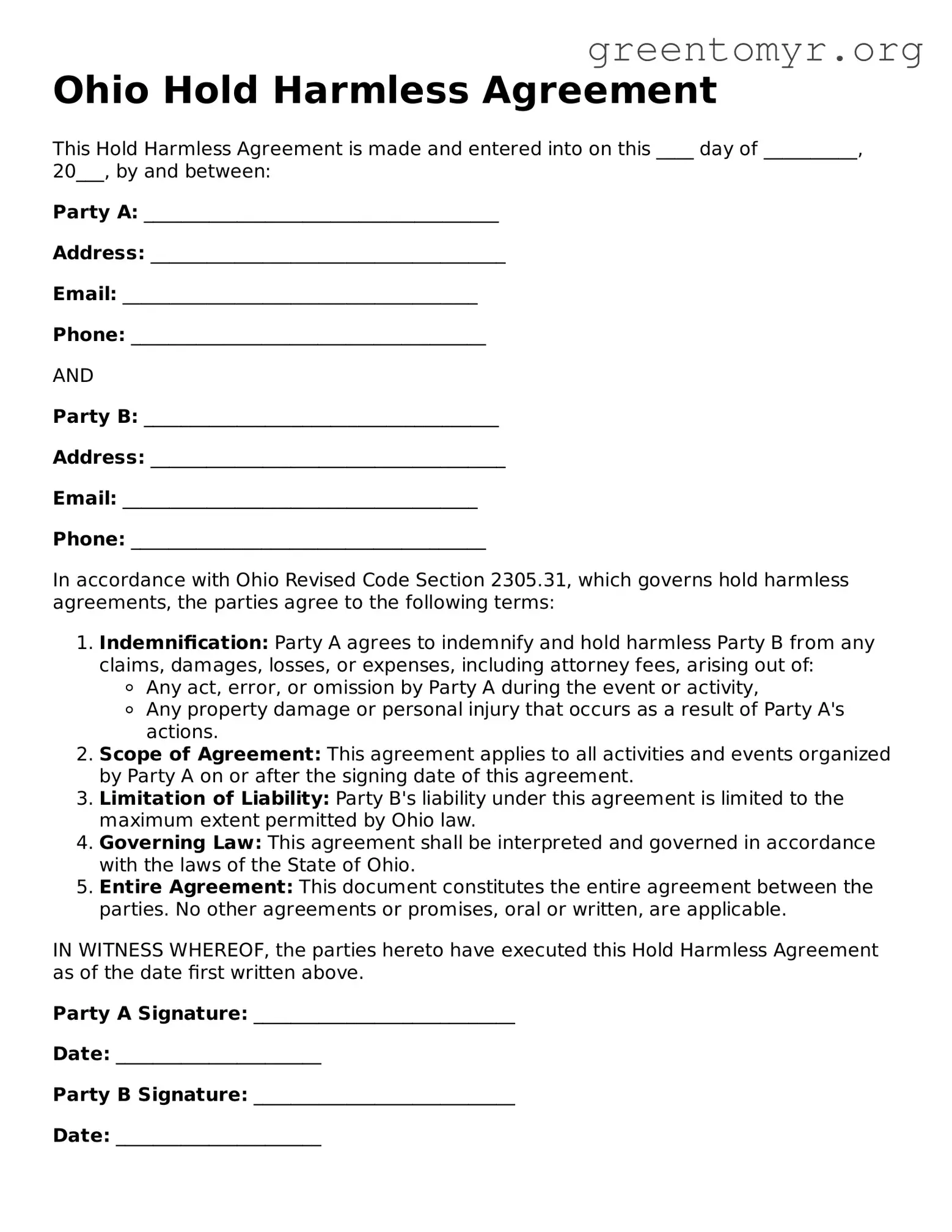Ohio Hold Harmless Agreement
This Hold Harmless Agreement is made and entered into on this ____ day of __________, 20___, by and between:
Party A: ______________________________________
Address: ______________________________________
Email: ______________________________________
Phone: ______________________________________
AND
Party B: ______________________________________
Address: ______________________________________
Email: ______________________________________
Phone: ______________________________________
In accordance with Ohio Revised Code Section 2305.31, which governs hold harmless agreements, the parties agree to the following terms:
- Indemnification: Party A agrees to indemnify and hold harmless Party B from any claims, damages, losses, or expenses, including attorney fees, arising out of:
- Any act, error, or omission by Party A during the event or activity,
- Any property damage or personal injury that occurs as a result of Party A's actions.
- Scope of Agreement: This agreement applies to all activities and events organized by Party A on or after the signing date of this agreement.
- Limitation of Liability: Party B's liability under this agreement is limited to the maximum extent permitted by Ohio law.
- Governing Law: This agreement shall be interpreted and governed in accordance with the laws of the State of Ohio.
- Entire Agreement: This document constitutes the entire agreement between the parties. No other agreements or promises, oral or written, are applicable.
IN WITNESS WHEREOF, the parties hereto have executed this Hold Harmless Agreement as of the date first written above.
Party A Signature: ____________________________
Date: ______________________
Party B Signature: ____________________________
Date: ______________________
